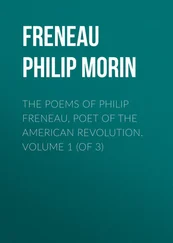The technological revolution associated first with copper and then with bronze occurred about 3,500 years ago in the Russian land. Evidence of copper ore and copper-smelting, as well as a range of objects including copper knives, ornaments and sickles, has been found in the Volga basin of eastern Russia. Bronze axe heads and spear heads have been found both near the Baltic and in the south — and male figures are characteristic of the votive objects and ornaments found. 8Then, about 3,000 years ago, the Iron Age arrived in Russia, and the pace of change quickened.
Trading networks, usually running along rivers, connected Russia both with the Mediterranean and with western Europe, which shared in the Iron Age culture. Even so, iron metallurgy is thought to have developed more or less independently in Russia. In any case, traders did not necessarily travel long distances — although some of the objects they traded in did. Commerce tended to be incremental, one group trading with its neighbours, and they with others, until commercial chains were formed along which travelled the commodities from which traders profited. A chain lasted until a cheaper or better alternative source was found, or until the consumers in the market learned to produce the goods themselves.
Though old technology often persisted alongside the new, metal technology speeded the pace of agricultural development. In areas where the use of such iron implements as the sickle caught on, more land could be cultivated and the community became richer. At the same time the makers of sickles forged swords, spear heads and axe heads, and made armour, allowing war to be waged more effectively. Iron culture made a society more attractive to predators; it also permitted a more effective defence. Certainly, with the advent of iron both settlements and society changed. Forts, albeit rudimentary at first, began to appear on hills overlooking farming land, and society became more differentiated both in function and in status. A variety of specialists appeared — metalworkers, people skilled in handling heavy weapons (like large axes), and organizers. But the new and larger society became more dependent on farming.
At the same time iron helped speed the extension of settlement northward into the forest zone, thanks to the iron axe head, which allowed trees to be felled more efficiently. It also contributed to swidden agriculture. This method of taming the forested wilderness and extending the area of farming was suggested by nature itself. Late-summer storms accompanied by lightning occasionally set fire to tracts of dried-out scrub and trees. The ashes provided a nutritious seedbed for plants, and the proto-Russians learned to exploit the phenomenon.
The swidden (or, more dramatically, ‘slash-and-burn’) method of farming, though simple, required patience and, in the initial phase, some heavy work. This would normally begin in early summer, when axe-men would hack down trees in a selected area of forest — probably near a river where the ground was flat and firm — and leave the timber to dry out until late the following spring. Techniques changed according to conditions: in conifer forests the bark was often stripped off to dry out the trees before felling. Such wood as was needed to make tools, build huts and use as fuel would be taken out; the rest would be burned, together with the undergrowth. The women and the weaker men would then set to with the sowing. Sometimes they scattered the seed directly into the ashes once these had cooled, though more often they used wooden hoes and forked scratch-ploughs, fashioned on the spot, to prepare a tilth before sowing.
At first the crops would be good. The ground, after all, was rich in potash and humus. Meanwhile wild plants, which had colonized the uncultivated parts of the clearing, provided good fodder for the newcomers’ domesticated animals. The method was comparatively cheap in terms of energy invested. However, after two, three or at most four seasons the harvests became sparse and poor, so the little community which depended on it had to move on and start the process again. Since the land had to be left fallow for at least fifteen years (and in some areas as long as thirty) before it regained strength, slash-and-burn agriculture demanded a large area of prospective as well as actual cultivation. It could not support a population of any density, though it certainly encouraged expansion of the land area farmed. Swidden farming was practised in Russia as early as 1000 BCE, and it was to be used by colonizing venturers for centuries afterwards in the course of taming the Russian land.
And swidden agriculture also had implications for private land-ownership. What point could there be in owning land when one’s family moved on regularly (if not necessarily far) every few years and there was no shortage of land anyway? 9The angry protests in Russia against the denationalization of land at the beginning of the present century may not be directly attributable to the historical effects of swidden farming, but the technique may have left a mark on the Russian mentality. Indeed, there is reason to believe that the distinctive character of certain Russian institutions originated in the particular nature of Russian farming, developed in response to difficulties posed by soil and climate.
The swidden farmers who had moved northward and those who remained in the Ukraine area shared much the same culture as well as much the same blood. However, differences in conditions and the availability of materials dictated variations in the houses they built for themselves. To the north, where timber was plentiful, houses came to be built entirely of logs, rather than the use of timber being confined to frames and battens; and the pitch of the roofs was much steeper, to facilitate the shedding of snow. And if differences of environment promoted change in aspects of physical culture, they are associated with developments in language too.
What is now northern Russia was inhabited at that time by small groups of people speaking Finnic dialects. The Russians-to-be were only beginning to penetrate these areas, and their language came, as they themselves had done, from the south. Scholars are still divided over the issue of whether cereal-farming was introduced at the same time as the Indo-European group of languages (to which Russian belongs but Finnish does not) by people who had originated in the so-called ‘fertile crescent’ of the Near East (the area of modern Iraq); the views of Sir Colin Renfrew on the spread of Indo-European languages have been challenged by another brilliant anthropologist, J. Mallory. 10But it is certain that the proto-Russians, like the proto-Ukrainians and proto-Poles and others, spoke Slavonic.
Linguistics experts can tell how, and roughly when, modern languages diverged from a common root like Latin or Old Slavonic. Thanks to them we know that Slavonic, like Latin, derived in its turn from a common Indo-European ancestor. Where Slavonic actually originated, however, has long been disputed: several Slavonic-speaking nations, from Russia to the Czech Republic, insist that it was on their territory In effect the issue has become a point of modern nationalistic pride. It seems certain, however, that speakers of Slavonic in its earliest form centred on areas east of the river Vistula and west of the river Dnieper in what is now eastern Poland and Ukraine. But, as Russia’s earliest chronicler knew, all Slavs spoke the same language, and other sources from Byzantium confirm the fact. Differences were to set in with the movement of populations and the passage of time, creating distinctive Russian, Czech, Bulgarian and other forms of Slavonic. But whereas another Indo-European language, Latin, began to dissolve into Italian, Spanish, French and the other Romance languages between 1,200 and 1,600 years ago, Old Slavonic was not to disintegrate into the variety of different eastern-European languages we know today until much later. 11
Читать дальше





![Stephan Orth - Behind Putin's Curtain - Friendships and Misadventures Inside Russia [aka Couchsurfing in Russia]](/books/415210/stephan-orth-behind-putin-s-curtain-friendships-a-thumb.webp)





